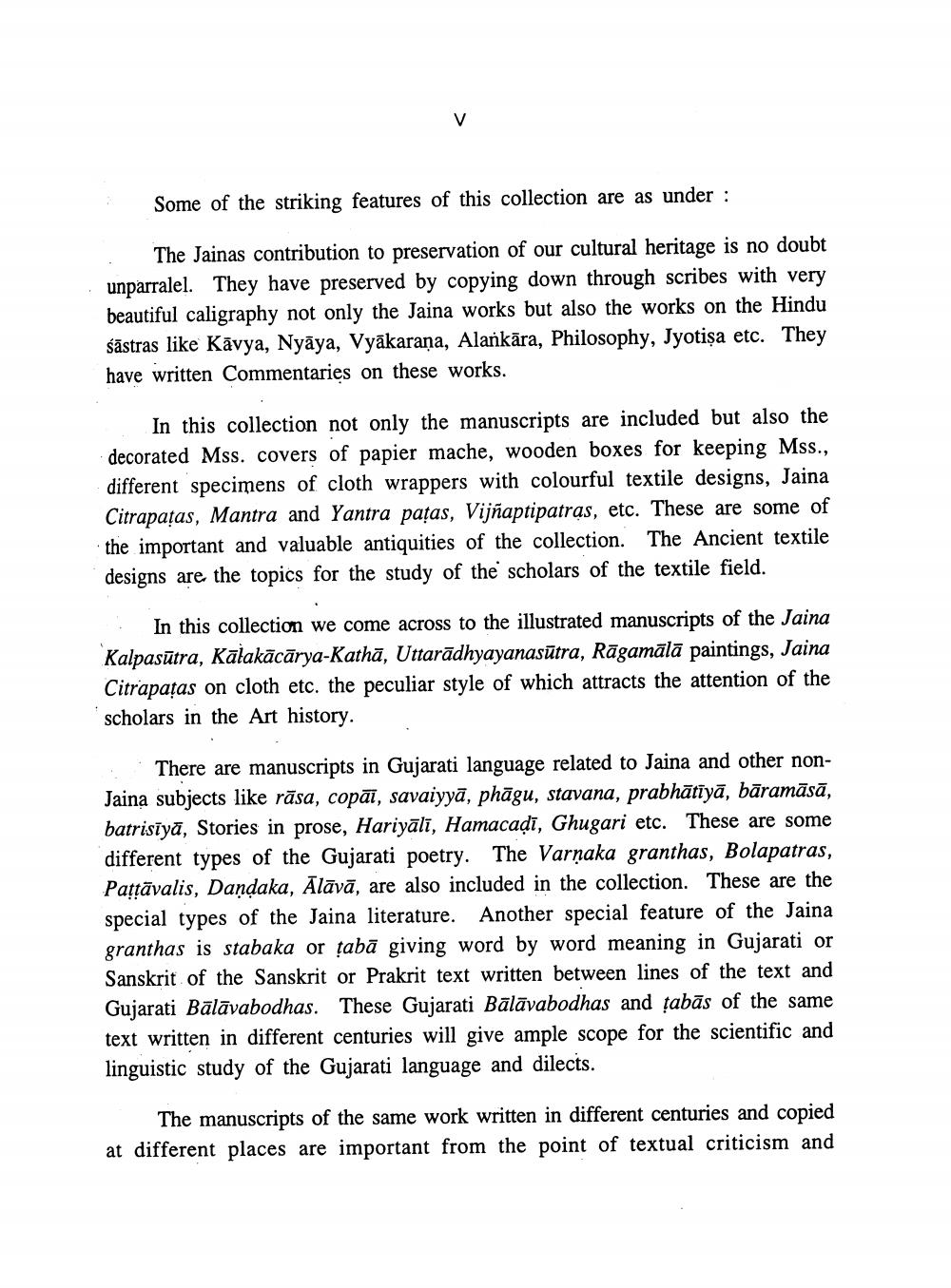________________
V
Some of the striking features of this collection are as under :
The Jainas contribution to preservation of our cultural heritage is no doubt unparralel. They have preserved by copying down through scribes with very beautiful caligraphy not only the Jaina works but also the works on the Hindu śāstras like Kavya, Nyāya, Vyakaraṇa, Alankara, Philosophy, Jyotiṣa etc. They have written Commentaries on these works.
In this collection not only the manuscripts are included but also the decorated Mss. covers of papier mache, wooden boxes for keeping Mss., different specimens of cloth wrappers with colourful textile designs, Jaina Citrapatas, Mantra and Yantra patas, Vijñaptipatras, etc. These are some of the important and valuable antiquities of the collection. The Ancient textile designs are the topics for the study of the scholars of the textile field.
In this collection we come across to the illustrated manuscripts of the Jaina Kalpasūtra, Kalakācārya-Kathā, Uttaradhyayanasūtra, Rāgamālā paintings, Jaina Citrapatas on cloth etc. the peculiar style of which attracts the attention of the scholars in the Art history.
There are manuscripts in Gujarati language related to Jaina and other nonJaina subjects like rāsa, copai, savaiyya, phāgu, stavana, prabhatīyā, bāramāsā, batrisiyā, Stories in prose, Hariyāli, Hamacaḍī, Ghugari etc. These are some different types of the Gujarati poetry. The Varnaka granthas, Bolapatras, Pattavalis, Daṇḍaka, Ālāvā, are also included in the collection. These are the special types of the Jaina literature. Another special feature of the Jaina granthas is stabaka or tabā giving word by word meaning in Gujarati or Sanskrit of the Sanskrit or Prakrit text written between lines of the text and Gujarati Bālāvabodhas. These Gujarati Bālāvabodhas and tabās of the same text written in different centuries will give ample scope for the scientific and linguistic study of the Gujarati language and dilects.
The manuscripts of the same work written in different centuries and copied at different places are important from the point of textual criticism and




